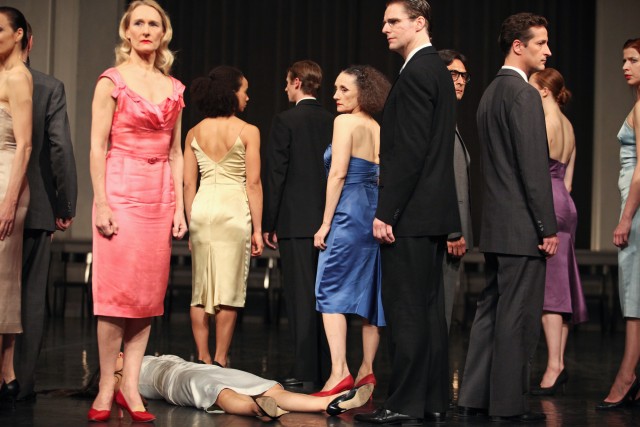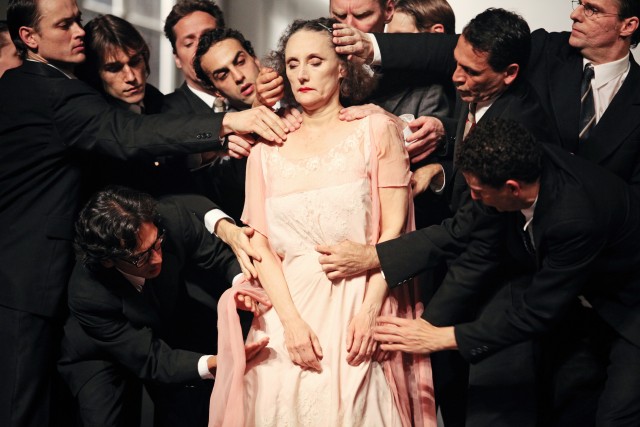
Tanztheater Wuppertal Pina Bausch’s KONTAKTHOF is finally making its BAM debut after thirty-six years (photo by Julieta Cervantes)
BAM Howard Gilman Opera House
Peter Jay Sharp Building
230 Lafayette Ave.
October 23 – November 2, $25-$110
718-636-4100
www.bam.org
www.pina-bausch.de/en
Shortly before a recent performance of Tanztheater Wuppertal Pina Bausch’s much-loved Kontakthof began, I bumped into longtime dancer and current rehearsal director Dominique Mercy, who was surveying the situation from the back of BAM’s Howard Gilman Opera House. I let him know that the primary reason I got into writing about dance is because of Pina Bausch; the first piece of contemporary dance theater I ever saw (at the behest of my wife) was the company’s Danzón at BAM back in 1999, changing everything I ever thought about dance, and that I had seen every Bausch work brought to Brooklyn since then. He put his hand on my shoulder, smiled, and said, “I’m so sorry. I take the blame.” Of course, there is nothing for Mercy or the immensely talented German troupe to apologize for; they’ve been delighting audiences around the world for more than forty years with their unique brand of performance, rife with movement, music, humor, and a special relationship with the audience. At the beginning of 1978’s seminal Kontakthof, which is finishing up its BAM debut November 2, the members of the company move to the front of the stage, show off their clothing (men in dark suits, women in beautiful gowns, designed by Rolf Borzik), run their hands over their hair, and open their mouth and grit their teeth. For the next two and a half hours, they engage in a series of gender-based antics and situations, all taking place in a dance hall / rehearsal studio with chairs along three sides. They occasionally speak into microphones, glide across the floor in unison, collapse in a fury, scream, and taunt and tease one another as a wide range of prerecorded music plays, from Anton Karas’s Third Man theme and Jimmy Dorsey’s “J. D.’s Boogie” to Lesso-Valerio’s “Liebeszweifel” and Ralph Benatzky’s “Einmal ist keinmal,” performed primarily by Juan Lossas und sein Tango-Orchester, who contribute several original songs as well.
Kontakthof, which can be translated as “Contact Zone,” “Meeting Place,” or “Contact of Courtyard,” has been performed by senior citizens and teenagers in addition to the regular company, each age group bringing a different nuance to the piece. At BAM, the regular company, which itself consists of performers of different ages, sizes, shapes, and nationalities, brought the piece to invigorating life, melding pain with pleasure as men and women fight it out onstage, always with a wink at the audience. Several dancers even approach the front row and ask for change so they can erotically ride a mechanical pony meant for children. Even as it occasionally gets repetitive, Kontakthof is a joy to behold, another masterpiece from Bausch, who passed away in 2009 at the age of fifty-eight but whose legacy lives on in the rich talent of her company, which is now in the clearly capable hands of longtime TR dancer Lutz Förster, who was named artistic director in April 2013. Seeing Tanztheater Wuppertal Pina Bausch every few years is like seeing old friends, catching up, finding out what they’re up to (the wonderful Nazareth Panadero, for example, won the 2014 Spanish National Dance Award for Interpretación), and then marveling at what’s been gained — and lost — over the passage of time. And for all of that, I don’t mind blaming Dominique Mercy one bit.
